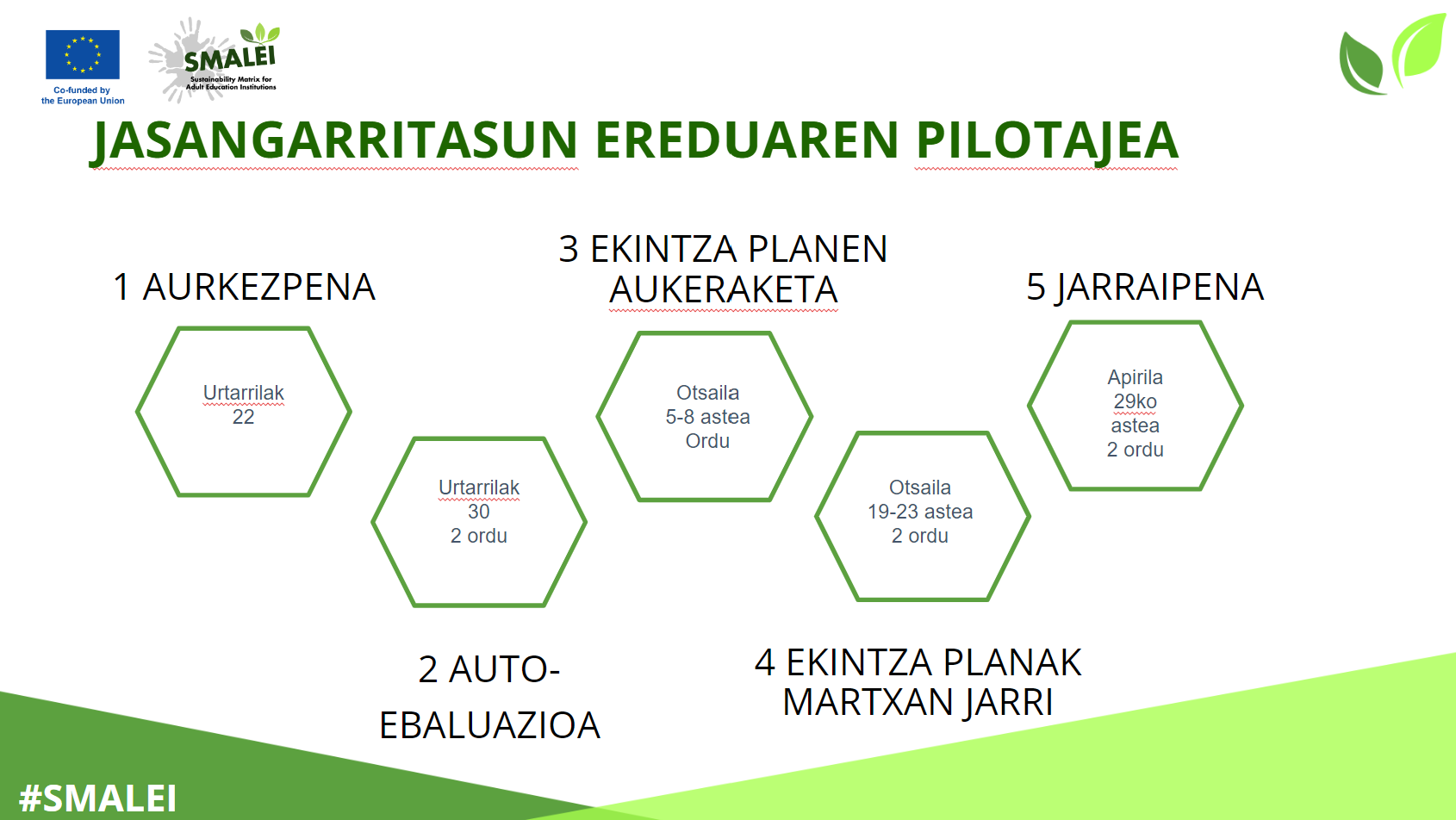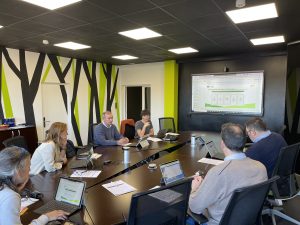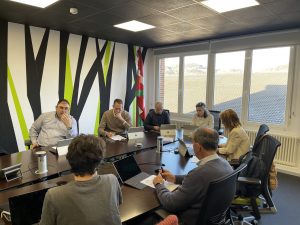Launch of SMALEI Sustainability Model Pilot Program
This post is also available in the following languages: Euskara, Español
We started the piloting phase of the matrix by analyzing the organization last week,
- Presentation
- Self-Evaluation
- Selection of Action Plans
- Implementation of Action Plans
- Follow-up
- Conclusions
- Presentation of results
We have already gone through the first two steps:
Presentation
The Presentation phase served as the initial introduction to the SMALEI Sustainability Model. During this stage, SMALEI team members provided the organisation management team with an overview of the matrix objectives, scope, and expected outcomes. The purpose is to ensure everyone has a clear understanding of the piloting goals and their roles within it. We had a formal meeting or workshop where detailed information about the sustainability model and the upcoming steps was shared.
Self-Evaluation
In the Self-Evaluation phase, participants assessed their current sustainability practices and performance. This involved a thorough review of existing policies, processes, and outcomes related to sustainability. The self-evaluation helped identify strengths, weaknesses, opportunities, and threats (SWOT analysis) in their current approach. It also sets a baseline for measuring future improvements and provides valuable insights that will guide the development of action plans.
In this evaluation phase, the SMALEI project members’ guiding through the matrix was helpful.
Now, we’ll analyse the results and will present them to choose possible actions. We’re on track!
Selection of Action Plans
The Selection of Action Plans phase is crucial for tailoring the sustainability initiatives to the specific needs of the institution. Based on the findings from the self-evaluation, participants brainstorm and propose various action plans aimed at improving sustainability practices. These plans are evaluated for feasibility, impact, and alignment with the overall sustainability goals. The most promising and practical plans are selected for implementation.
Implementation of Action Plans
During the Implementation of Action Plans phase, the selected strategies and actions are put into practice. This phase involves detailed planning, resource allocation, and the execution of activities designed to enhance sustainability. Regular monitoring and adjustments ensure that the plans are effectively advancing towards the set objectives. Collaboration and communication among team members are vital to overcoming challenges and achieving success.
Follow-up
The Follow-up phase involves continuous monitoring and evaluation of the implemented action plans. Regular check-ins and progress reports help track the effectiveness of the strategies and identify areas for further improvement. Feedback from stakeholders and participants is collected to ensure that the actions are yielding the desired outcomes. This phase ensures accountability and keeps the momentum of the project.
Conclusions
In the Conclusions phase, the outcomes of the project are summarized and analyzed. This phase includes a comprehensive review of what was achieved, lessons learned, and the overall impact of the sustainability initiatives. The conclusions drawn from this analysis provide valuable insights for future projects and help refine the sustainability model.
Presentation of Results
The Presentation of Results phase is the final step where the findings, achievements, and overall impact of the project are formally shared with stakeholders, participants, and the broader community. This often involves a formal presentation or report that highlights key successes, challenges faced, and recommendations for future actions. The goal is to disseminate the knowledge gained, celebrate the achievements, and encourage ongoing commitment to sustainability practices.
4o







